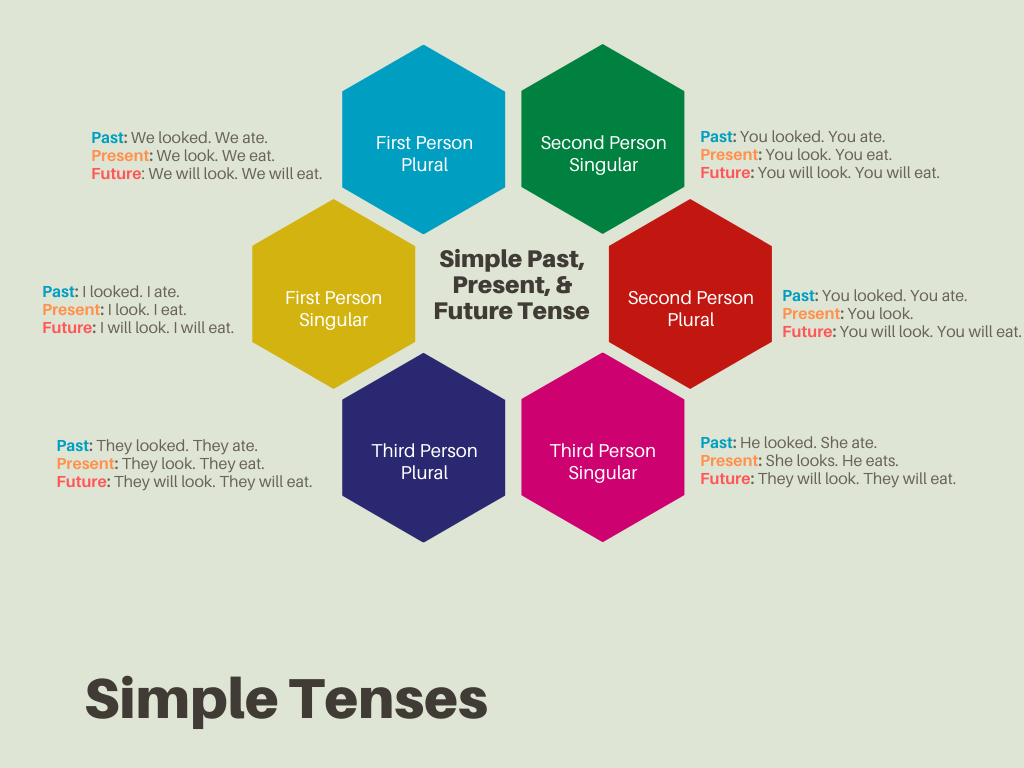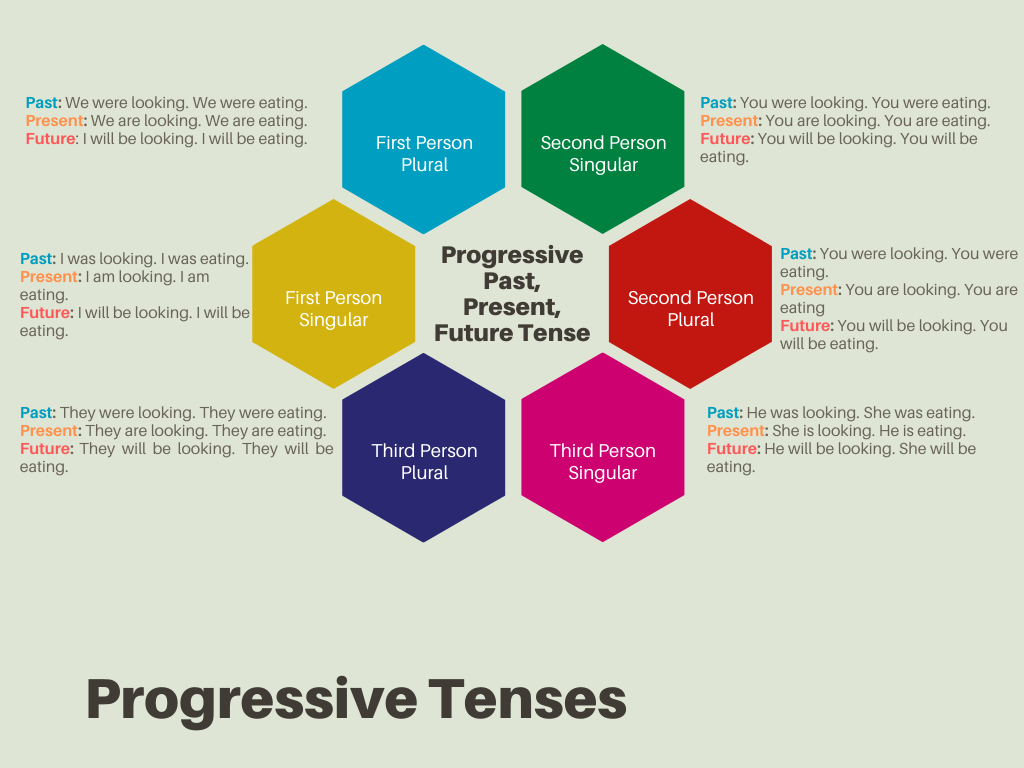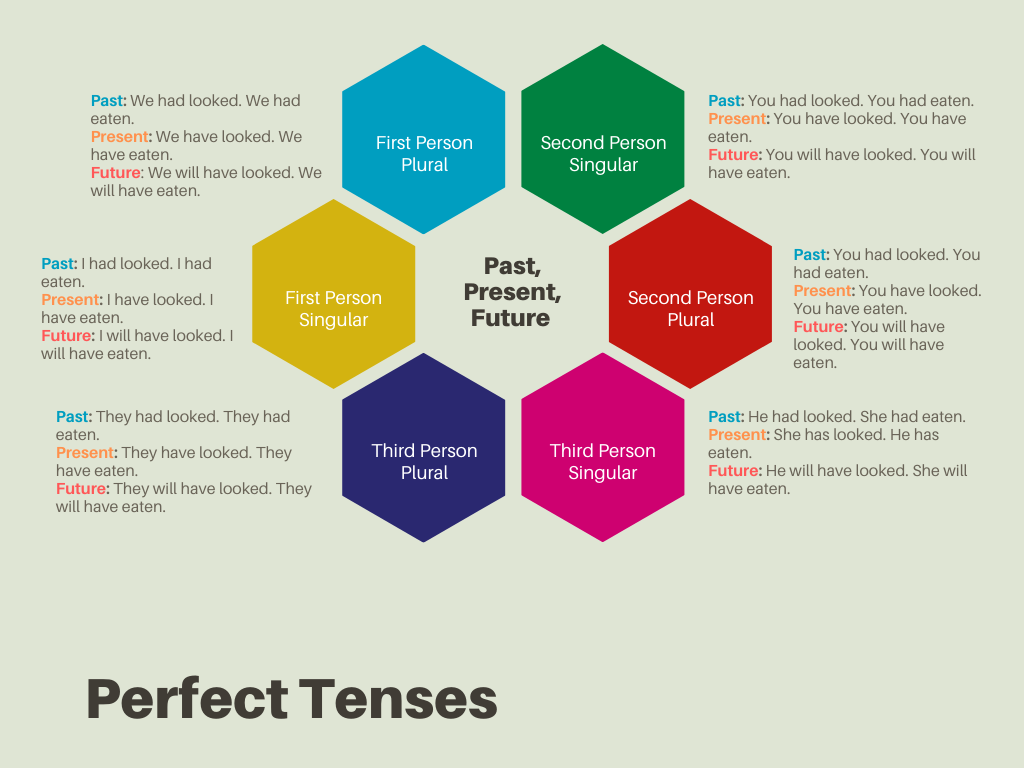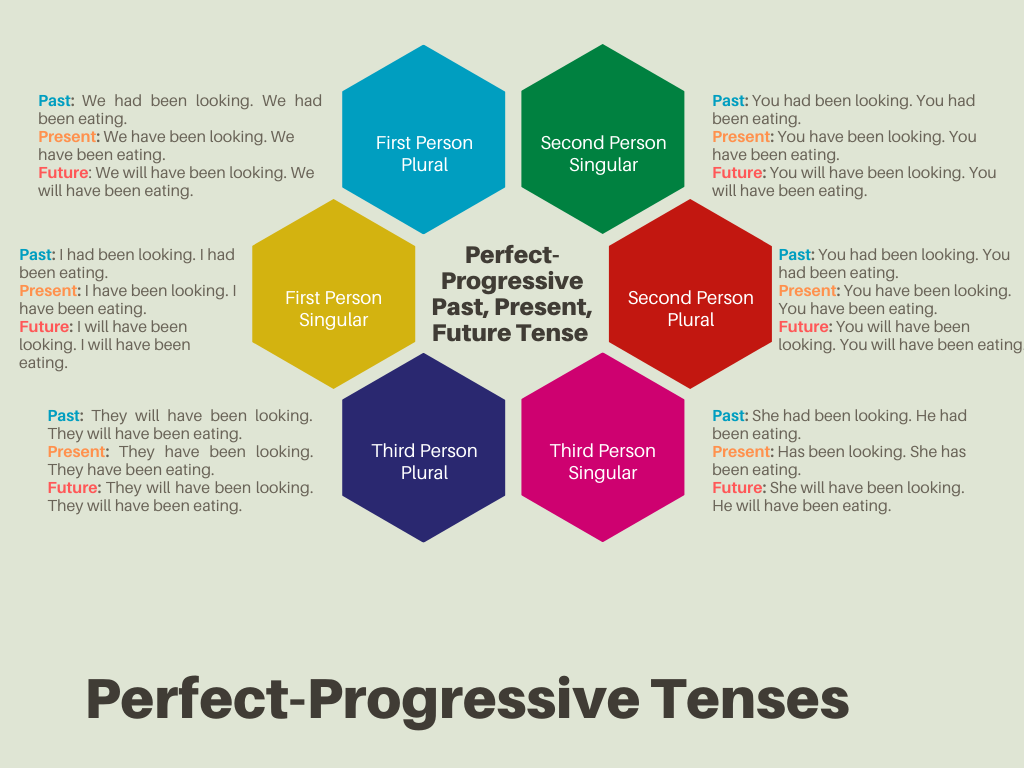LEARNING OBJECTIVES
- Understand the simple verb tenses: past, present, and future.
- Recognize the progressive, perfect, and perfect progressive verb tenses.
- Correctly use the different verb tenses.
The tense of a verb usually gives readers a sense of time. In other words, verb tense explains if the action in the sentence 1) took place previously (past tense), 2) is taking place right now (present tense), 3) or will take place some time in the future (future tense).
Tense can also indicate continual or recurring action (progressive), action completely taken place as of a certain time (perfect), and action that began in the past but continues or recurs through the present time (perfect progressive).
Verbs also use different forms based on number and point of view. In other words, if a pronoun is singular (I, you, he, she, it) or plural (we, you, they), this will make a difference in the verb form used. Additionally, first person (I, we) might require a different verb form from second person (singular you, plural you) and third person (he, she, it, they). The following graphics illustrate the ways time can be expressed using a regular and an irregular verb.




SB2 is adapted from “Sentence Building” in Writer’s Handbook, 2012, used according to Creative Commons CC BY-NC-SA 3.0